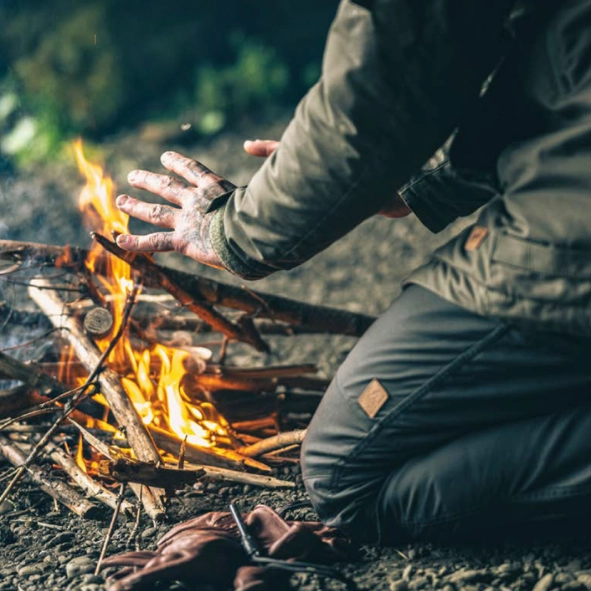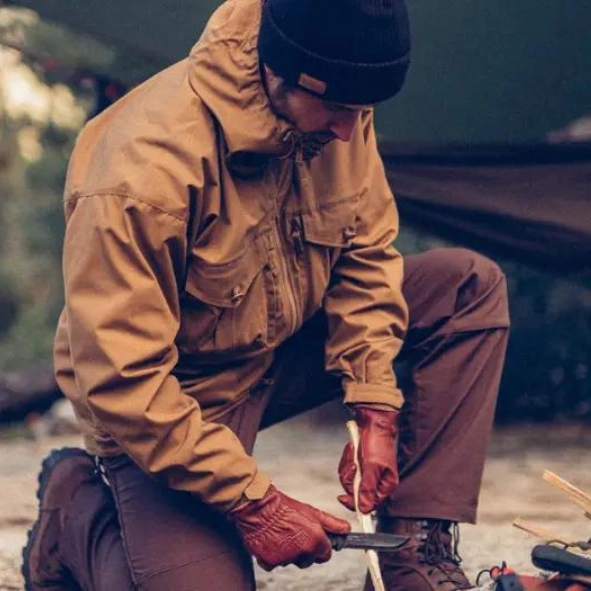How to build a fire properly: A guide for bushcraft and outdoor
Making a fire is an essential skill for every bushcrafter. A properly built fire will give you warmth, cooking and safety in the outdoors. Below we give you instructions on how to build a fire properly and efficiently.

Preparation of the fireplace
Site selection: choose a dry and sheltered spot, ideally on bare ground or sandy substrate. Avoid places under trees or near dry foliage.
Cleaning the area: remove all combustible materials within at least 2 metres of the fireplace. Create a safe area for the fire.
Materials for starting a fire
Matches or lighter: the easiest way to start a fire. Keep them dry at all times.
Flint: A reliable tool for starting a fire in any conditions. Using a flint requires practice.
Natural materials: birch bark, dry grass, fine twigs and other easily combustible materials.
Are you missing equipment? Check out our e-shop for everything you need to start a fire.
Fire starting procedure
Preparation of tinder: Collect dry tinder such as dry grass, moss, fine twigs or birch bark. The tinder must be dry and finely torn to ignite easily.
Prepare firewood: Collect thin twigs and sticks. These smaller pieces of wood are easy to light and provide a stable base for larger logs.
Preparing the main wood: Collect larger logs and thicker branches. These pieces of wood will ensure a long-lasting burn.
Methods of lighting a fire
Flint and tinder: hold the flint in one hand and with the other hand scrape the flint against the flint stone. The sparks should fall on the tinder and set it on fire. Once the tinder is burning, add kindling and then larger logs.
Traditional methods (rubbing wood): this method requires more training. Use a wooden drill and a friction board. Rotate the drill bit to create friction and heat that ignites the tinder.

Keeping the fire going
Adding wood: Add wood regularly to keep the fire going. Start with smaller pieces and gradually add larger logs.
Fire control: Never leave the fire unattended. Keep plenty of water or sand around the fire pit for quick extinguishment if necessary.
Security measures
Fire extinguishers: always have water or sand on hand in case of emergency.
Wind conditions: watch out for wind, which can spread sparks and cause fires.
Leaving the fireplace: Make sure the fire is completely out and the site is safe before leaving.
Conclusion
Making fire is a skill that every bushcrafter should master. Proper preparation, appropriate materials and safe methods will ensure your success. Practice regularly and follow safety precautions to ensure your fire is always safe and effective.
Powered by Froala Editor